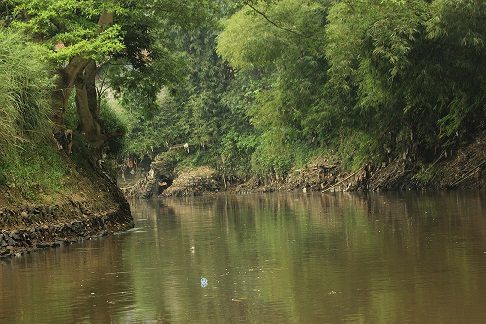KEHATI: Strategic Value of Bamboo for the Nation’s Future

-
Date:
30 Apr 2020 -
Author:
KEHATI
DATE: 22 Mar 2018
AUTHOR: KEHATI
As an institution that has been developing a bamboo conservation and sustainability program, the Indonesian Biodiversity Foundation (KEHATI) welcomes the launching of the 1,000 bamboo villages program by the Ministry of Environment and Forestry (KLHK). This program is expected to support efforts to revive the national bamboo industry, while helping to improve the environmental carrying capacity.
This was stated by the Director of Communication and Resource Raising for the KEHATI Foundation, Fardila Astari, when accompanying the Ministry of Environment and Forestry inaugurating the building where bamboo preserved using smoking method in Golewa District, Ngada Regency, East Nusa Tenggara, Thursday (3/22). The building functions as a bamboo field training center and at the same time becomes the centre of the bamboo village community that is already running in the district.
The existence of bamboo plants, said Fardila, so far tends to be ignored. Many residents chose to cut down the bamboo grove because it was considered to be less useful and frightening. Without appropriate action, eventually it will disturb the balance of the ecosystem.
“Though bamboo has a very strategic value for development. He has an ecologically vital function and has great potential to support the future economic growth, “he said.
Ecologically, bamboos are very helpful in increasing underground water reserves, as well as producing oxygen. Its growth is very fast and does not require special care. Its existence is useful for the conservation of critical lands and watersheds.
Bamboo also holds the potential to develop the national economy. In 2016, this commodity contributed export revenue worth IDR 6 trillion, and placed Indonesia as the third largest bamboo exporter in the world, after China and India.
Indonesia is home to 160 species of bamboo out of 1,200 – 1,400 species in the world, of which 88 are typical species that are spread throughout Indonesia. The typical species does not grow in other countries.
Fardila hopes that the system and cooperation that runs in the cultivation and utilization of community-based bamboo in Golewa can be replicated in other areas. Bamboo processing systems such as those developed in the area are very potential to be developed in other islands.
Bamboo stems can be sold for logs or processed into a variety of household products, decoration, buildings, furniture, musical instruments, flooring, toothpicks, satay, incense, and so on. Meanwhile, bamboo roots are used for various decoration, while young bamboo shoots can be consumed as vegetables.
With large area of land that has the potential to plant bamboo, Indonesia has the opportunity to boost bamboo productivity and export capacity. Moreover, bamboo can be planted on degraded lands, as well as plants that function to rehabilitate existing land.
As the third largest exporter of bamboo in the world, Indonesia has only mastered a market less than 10 percent. It is still very far compared to China which reached a range of 40 percent. Europe is an example of an attractive importer and exporter. The lesson, encouraging the skills of bamboo producers or farmers to be able to process their bamboo into processed commodities, will provide greater market opportunities. Utilization that provides added value is also still an ongoing task in this country.
Therefore, as an institution that carries the vision of conservation and sustainable use of biodiversity, in recent years the KEHATI Foundation has paid more attention to the conservation of bamboo plants.
One of the efforts that have been carried out is planting bamboo trees in a number of provinces, including in Greater Jakarta, Central Java, East Java, Bali, West Nusa Tenggara and East Nusa Tenggara. This bamboo conservation program has been running since 2009.
“We are always open to working with all parties. Preservation of the environment is the responsibility of everyone. And we believe, in actuality many citizens and corporations who actually have the desire to be involved in activities like this, “said KEHATI’s Agriculture Ecosystem Program Manager, Puji Sumedi.
This bamboo conservation program does not stop with planting, but also includes post-harvest activities, such as cultivation training, farmer empowerment, capacity building, and bamboo processing. This is what KEHATI has been doing in previous conservation activities.
Some bamboo conservation activities that have been carried out by KEHATI include planting bamboo in the area of Mount Masigit, West Bandung, Sumedang, Indramayu, the Mount Merapi Museum (total 10,500 seedlings), then Pesanggarahan, Cisadane and Ciliwung Watersheds (a total of 5,500 seeds).
KEHATI has also previously held planting activities in three traditional villages in Bali, namely Renon Village, Straits and Pupuan Forests, Tabanan and Gianyar, with a total of 7,500 seedlings. On Flores Island, KEHATI supports the planting of bamboo around watersheds and springs in West Manggarai, Manggarai, Ende, and East Flores, each with 1,500 seedlings.
